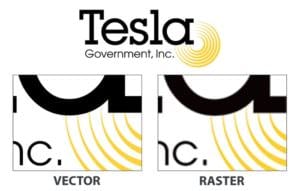Did you know that you have access to robust conflict data on Africa? Or that the United Nations High Commissioner for Refugees (UNHCR) and the United States Agency for International Development (USAID) have made reports on refugee situations throughout the Middle East available to you? What about World Bank project information? Did you know it can be readily found online? Yes, I’m speaking to you, every human at your desk (or let’s be honest—on your phone). You don’t need to be in government or work for a fancy firm to find this information.
In any given area of interest, the amount of information available to you on the open internet is astounding. These are resources that many in the US military and government overlook, to say nothing of everyday Americans. Unfortunately, there is a prevailing mindset that if a data source is on the internet, it must not be of great value. But the fact is any data—unclassified or classified—can be enhanced by other data sets and information that are open and free for all to use.
There are many government agencies that work exclusively at the unclassified level for the purpose of supporting the general public. USAID, for example, has a mission of ending widespread poverty and promoting resilient, democratic societies. Accomplishing these missions involves the cooperation of many different organizations, agencies, and foreign partners, and is thus reliant on data being public. If their information were closely held and employed restricted access controls, the organizations’ efforts to work effectively together across many fronts would be thwarted. As such, their reports and data are open and available for colleagues, but also for others working in the same areas, but perhaps with different goals. In this case, transparency results in a more robust system of information, improving the likelihood of mission success. Other agencies and organizations with open, available data include:
Another reason open-source information should be promoted is that it is accessible and available when it is needed. A US soldier, government analyst, or a person working for an NGO does not always (and sometimes never) have access to classified systems. But there is plenty of invaluable information that is shared by a community of people working with you—perhaps not directly, but with you, nonetheless. And accessing that information is as simple as opening your browser.
The National Geospatial-Intelligence Agency (NGA) has been at the forefront of finding the best ways to work with unclassified data. At a GEOINT symposium in December 2016, NGA’s director Robert Cardillo said “Classified sources, methods and networks will always have value in our agency and to our customers, but we cannot always view unclassified information as supplemental… Moving forward the reverse is more likely to be true — that which is exquisite but classified will supplement an ever broader and richer unclassified base.”
Whether you work for the government or private industry, don’t limit yourself by assuming open-source data is either unavailable to you or worthless. Seek out peers and share information. You might be surprised by how many avenues of open-source data and information become available to you as you do so. And with that information, collaboration, and greater context, you can generate improved intelligence for your team.
How do you use open-source materials in your work? What tips do you have for your fellow professionals?
Related posts
When Big Tech Is Not the Answer—Why Small Businesses Get More Done

Afghanistan Is Finally Holding Elections—While the Taliban Gobbles Up Territory

The Geospatial Data Act of 2017: A Necessary Step Forward, with One Major Flaw

Vector vs. Raster: What Do They Mean and Which Should I Use?
